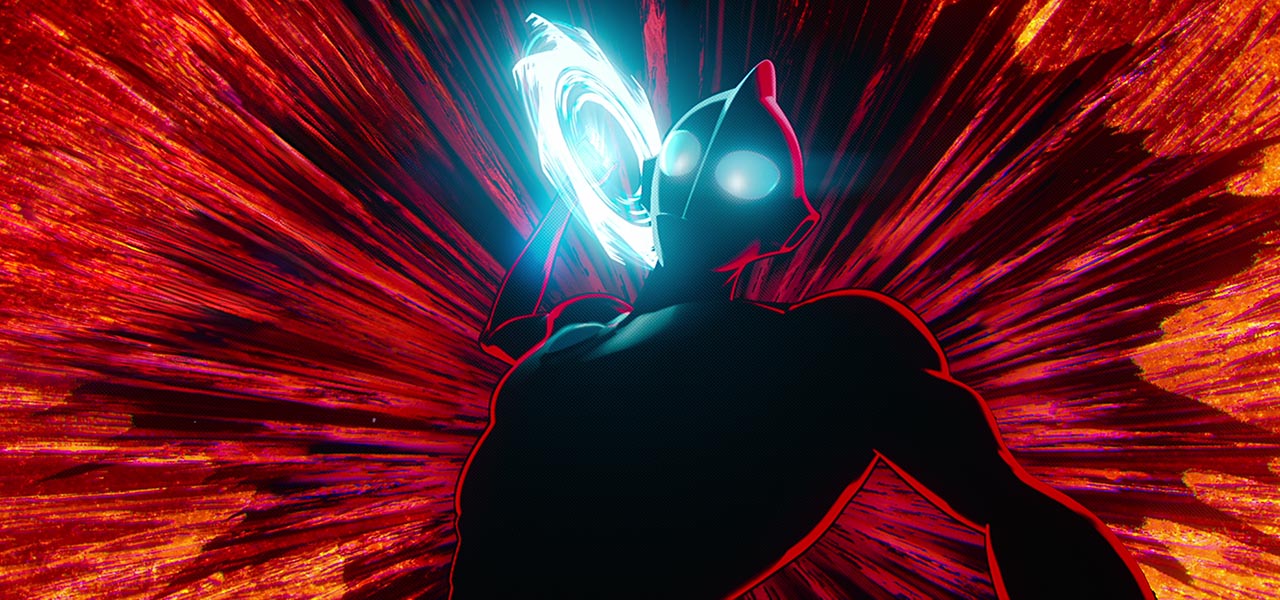
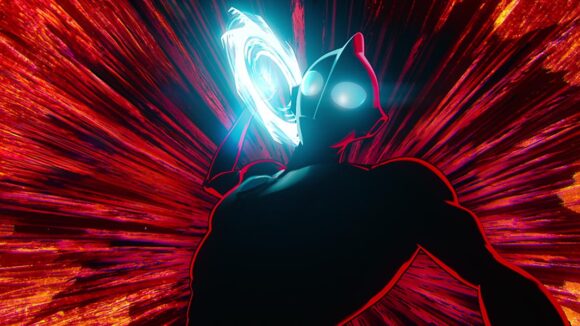
How ‘Ultra-Man: Rising’ Found A Fresh Take On Tokusatsu And Kaiju Genres
For nearly six decades, the 40-meter giant with a finned helmet, glowing eyes, and red-and-silver livery has soared over the tokusatsu and kaiju genres. Since his appearance in 1966 for the Tokyo Broadcasting System as the first tv show from Godzilla co-creator Eiji Tsuburaya, the size-altering superhero from Nebula M78 has battled creatures through multiple series and feature films, and on June 14 he takes flight in Ultraman: Rising, an animated feature from Netflix and Tsuburaya Productions.
The new production is a colorful, heart-on-its-sleeve take on the Ultraman mythos with animation by Industrial Light & Magic. The story focuses on cocky baseball champ Ken Sato (voiced by Christopher Sean), son of the original Ultraman, Professor Sato (Gedde Watanabe), and his wife Emiko (Tamlyn Tomita), who steps into his father’s shoes to battle a new kaiju threat and faces new responsibilities when he becomes the guardian of an orphaned kaiju infant, Emi.
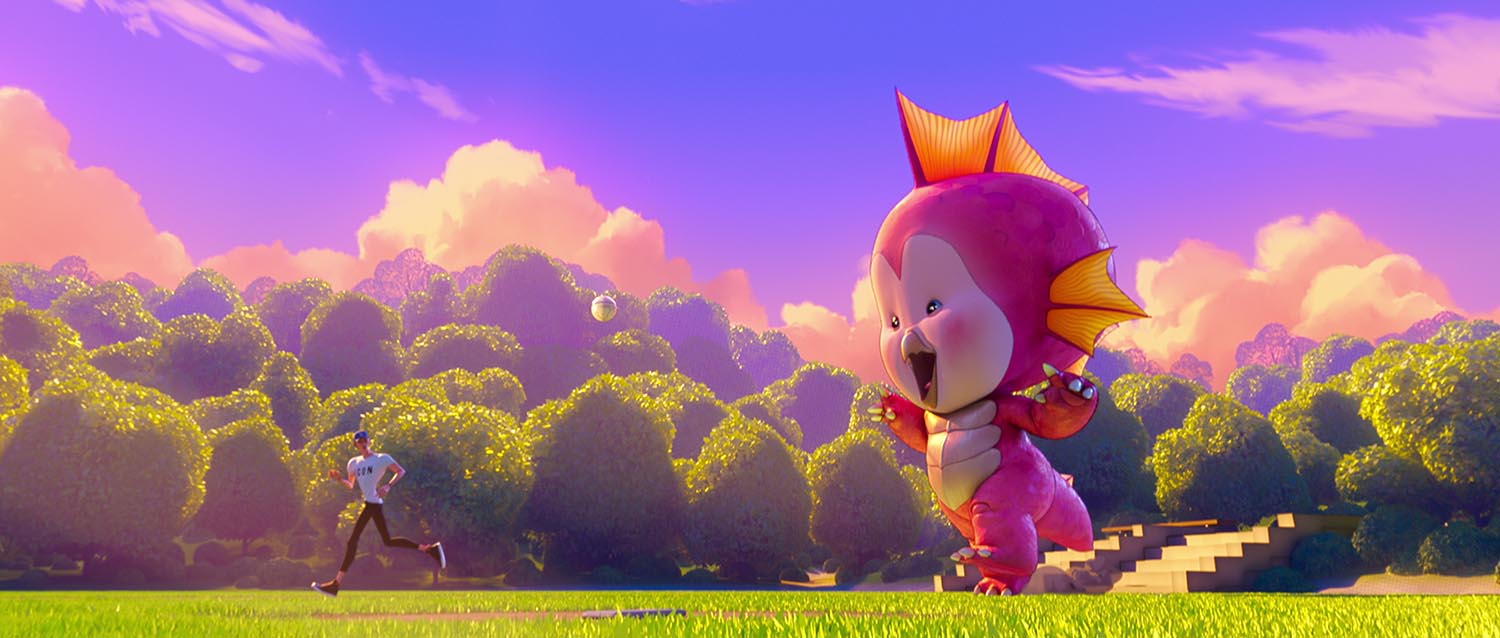
The Netflix release was the culmination of a passion project more than two decades in development with director Shannon Tindle (Lost Ollie) and his long-time collaborator, co-director John Aoshima (Kubo and the Two Strings). Cartoon Brew caught up with the filmmakers to discuss the creation of their tribute to the Tsuburaya classic.
Cartoon Brew: How did you two come together on this project?
Shannon Tindle: I first conceived this in 2001. Marc Haimes and I co-wrote the treatment and two drafts, called Made in Japan. I pitched it to every studio in town. John was aware of it and was a big supporter. But the first time that John became involved when I sold it to Sony and we started to develop it there in 2016. John and I had just come off of Kubo [and the Two Strings], and I asked him, ‘Hey, man, do you want to work on this Ultraman-inspired movie with me?’
John Aoshima: Yeah, Shannon and I have a shorthand communication. We met at Calarts, back in ’97. We were fast friends, and we were roommates. When he conceived the idea, I was there. And he shared his sketches with me.
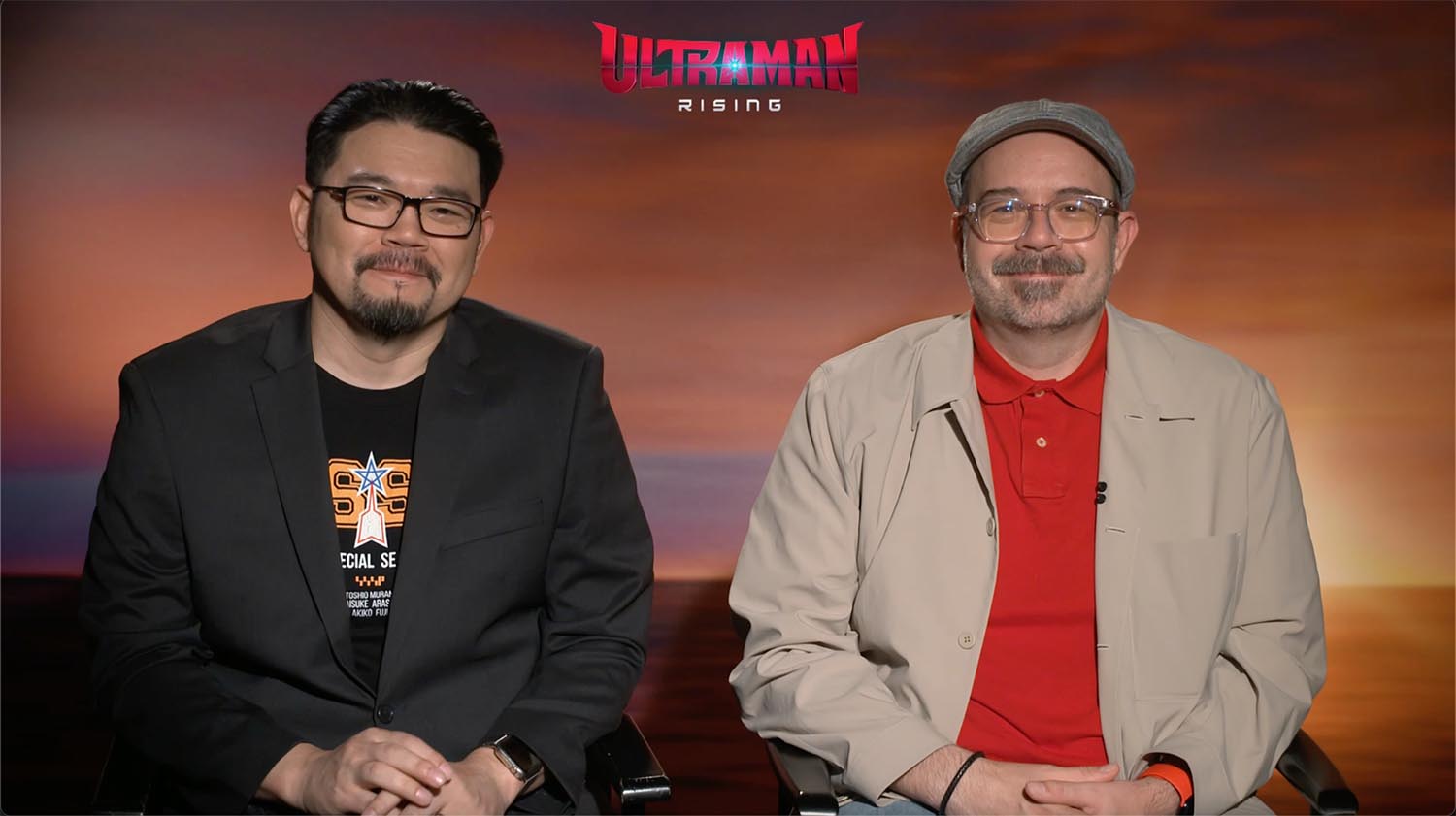
The character design has an interesting graphic look – human characters have a sculptural, graphic sensibility but with subtle line work, and hair has a silky mane-like quality. What led you to those concepts?
Tindle: I still do character design on all the films that I make. And I worked closely with our character art director, Keiko Marayama, who did the lion’s share of the character design. I love the elegant elongated portions of Leiji Matsumoto’s work for Captain Harlock and Queen Emeraldas; [it] is one of my favorite character designs ever. So I thought, let’s see if we can do something like that because I haven’t seen that before in cg.
Ken’s silky hair was inspired by young Toshiro Mifune – who had that beautiful shock of hair in his first film, Snow Trail , in 1947. And then, in developing the rendering style for working with our production designer Marcus Mateu-Mestre, and our art director, Sunmin Inn. Sunmin brought up the Copic marker blending techniques that you see on manga covers. Then, we worked with ILM. Sunmin would do paint-ups; they would try to replicate the look, and they created a whole toolset to facilitate that.
ILM has created some terrific kaiju in the past, like Pacific Rim and Ready Player One, and you feature some Eiji Tsuburaya favorites – how did you develop creature designs for Neronga and Gigantron?
Tindle: Gigantron was an original kaiju that I created and designed for this film. But I wanted her to reflect that guy-in-a-suit aesthetic of Tsuburaya. But Bemular and Neronga we pulled from the Ultraman show. Bemular was the first kaiju that Ultraman fights in the original series. And Neronga is one of those kaiju that you see across all the Ultra series. Everybody knows who Neronga is, so we chose a couple of the big icons to feature for fans.
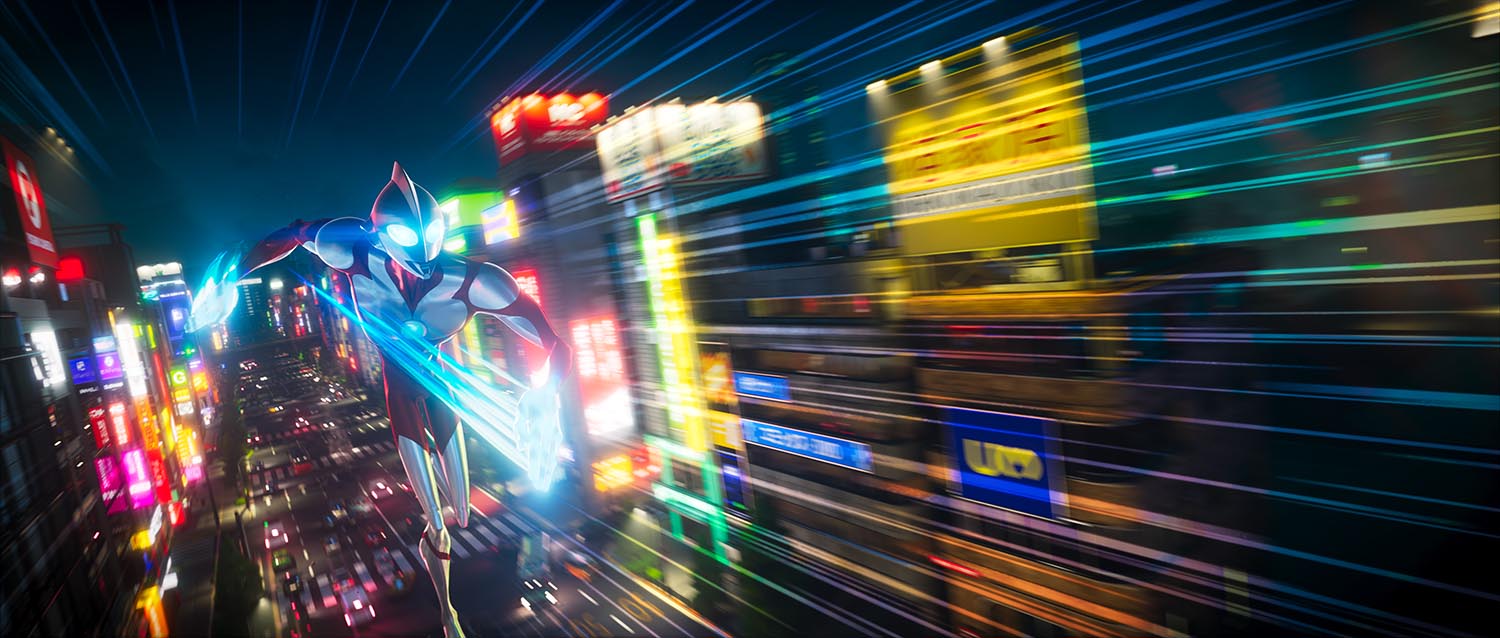
Was Gigantron distilled from other Tsuburaya creatures?
Tindle: ‘Gigantron’ is a silly name that I came up with. There is a little bit of a Western dragon in the character when she’s upright, because of the guy-in-suit [aesthetic]. But then, there’s an element of King Ghidora which had the long neck, but with three heads and wings, so there’s a little bit of Ghidora in there, too.
For Gigantron’s offspring – how did you arrive at Emi’s physique, her glossy pink scales, and the glow that she sometimes displays internally?
Tindle: I first designed her back in 2001, and she pretty much stayed the same. Again it was following the aesthetic if the kaiju in Ultraman were guys in suits, what would it look like if you put a toddler in a suit? So, we used those chubby baby proportions that we all love and find appealing. Her pink color came from an octopus character that I’d seen as a vinyl toy from Japan, a 1970s tokusatsu children’s show called Kure Kure Takora. Her glow came from the fact that she’s non-verbal. We wanted to give her as many ways to communicate as possible, and since she is a creature, we decided to have her change color to reflect how she is feeling.
Emi’s infant emissions – liquid and gaseous – are very visceral and satisfying. Were those ideas perhaps inspired by your own experiences in parenting?
Aoshima: Yes! [laughing] That very much came from the idea ‘how can we weaponize the things that kids do’? And then, a great friend of ours that we went to Calarts with, [additional visual development artist] Dave Lee, helped to design the effects for the film.
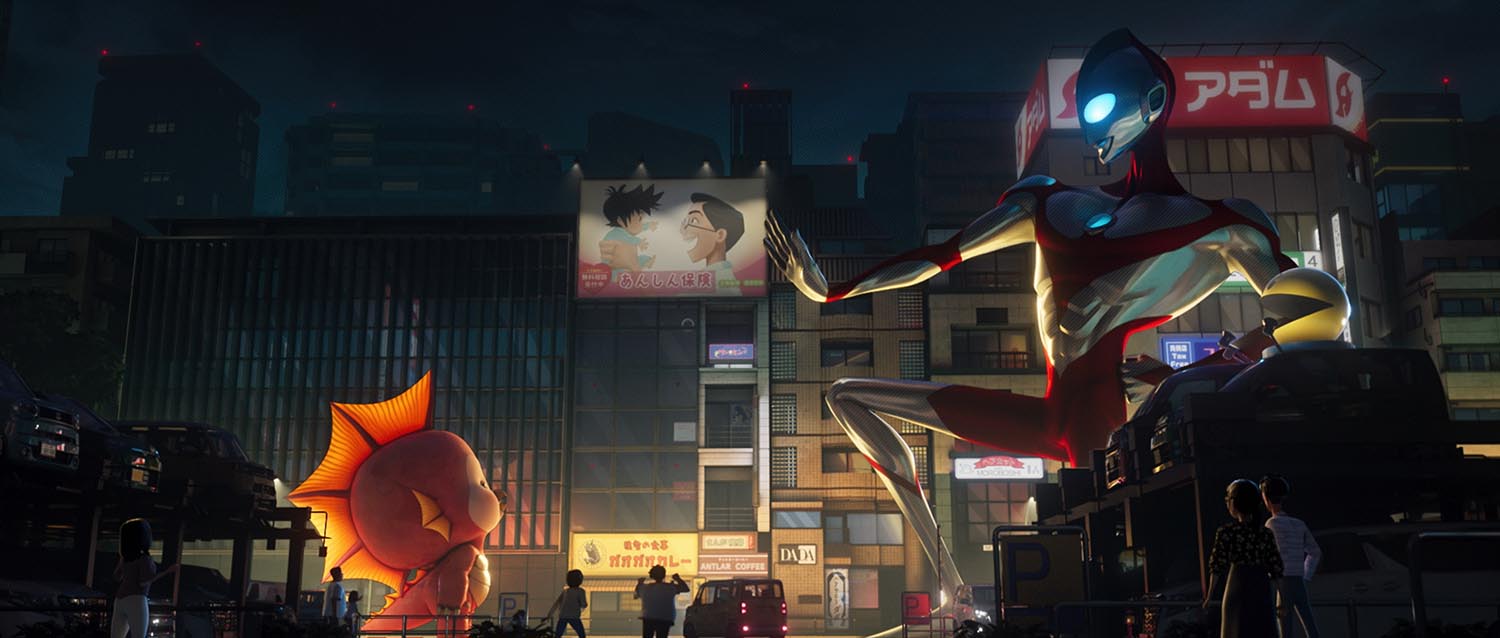
You have some classic visuals with Ultraman’s crossed-arms Specium Ray effects, and, in the heat of battle, you sometimes push into manga territory using psychedelic backgrounds. How did you develop those effects with ILM?
Aoshima: Those moments were inspired by graphic elements in the original series. We thought it would be great to have abstract ‘color splash’ moments to convey emotions for our character. So, we took those images, and Sunmin, our art director, painted them and worked with the amazing team at ILM to create those moments.
Tindle: The swirl effect came from the original titles for both Ultra Q and Ultraman – they did this reverse effect where they filmed the ‘Ultraman’ title in paint, they swirled the paint, and [when run backward] it forms the letters in paint. That was our inspiration for that. And then, our end credits are silhouetted like the credits in the original series. Sunmin created those [concepts].
The moments when Ultraman’s punch freezes and streaks with vibrant color are very powerful. What did they mean for Ken, dramatically and emotionally?
Tindle: It was to express emotions that may not be best expressed in words. We wanted to show Ken’s anger, rather than having him shout. We had the visuals change to express [those feelings]. Or, the moment when Emi is born: what does it feel like to see life for the first time? Well, maybe it would feel like a nursery, with a moon and the stars hanging from the ceiling of a nursery. ILM used Sunmin’s concept artwork for that. And then, the ‘impact frames’ that we have are common in anime – when you want to give it a punch, for a few frames you’ll just go black and white. That was inspired by anime.
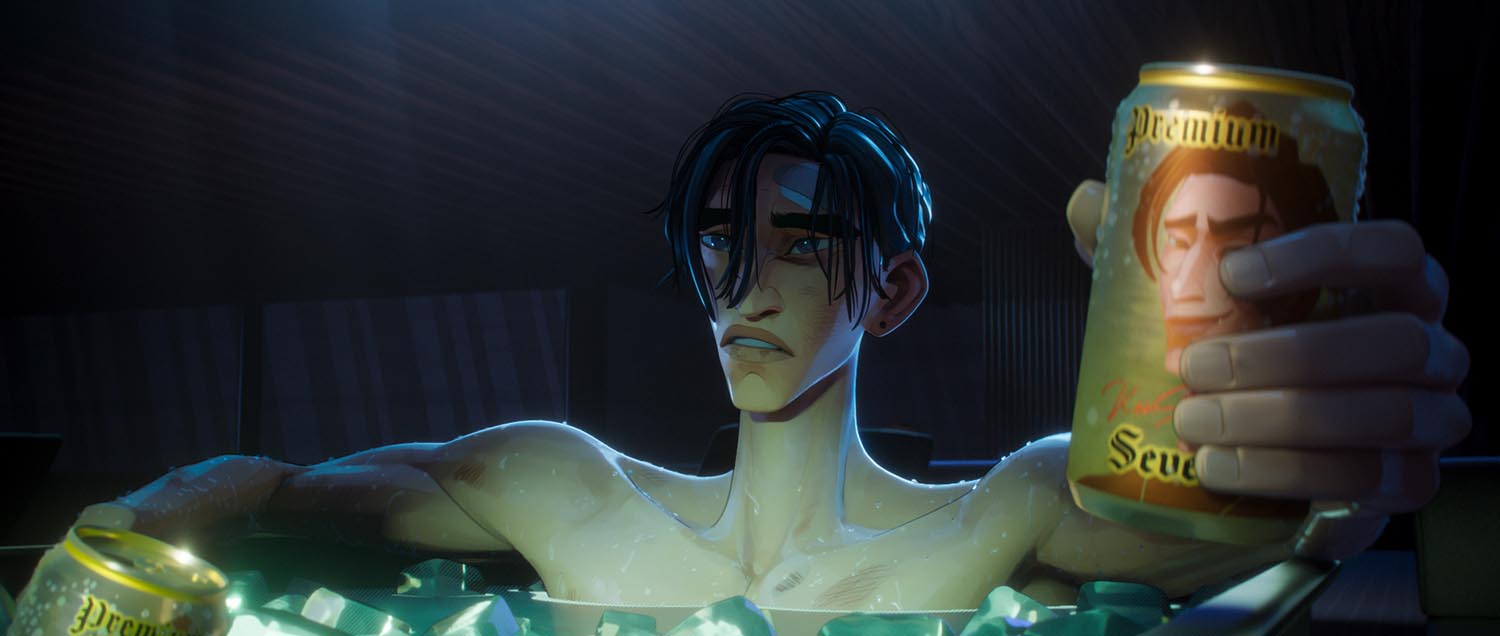
Environments have a Pop Art feel, but you also use photorealistic elements very beautifully. There’s one moment, in the rain, when Papa gets in his car and as he’s driving away the tail lights reflect on the lens. How did you arrive at that lovely blend of stylization and photorealism?
Tindle: Working with ILM on that particular shot, where Sato’s Mazda Cosmo leaves, and you see that anamorphic lens flare. Our visual effects supervisor, Hayden Jones, studied the characteristics of TohoScope lenses and then imagined them in our style. Our [digital] lenses were inspired by real lenses but created from scratch.
The film has many gentle and humorous scenes, as well as epic kaiju action slam-downs. How did you apportion those between animators?
Aoshima: I started as head of story on the film, and so I knew the story department well. We cast our talented team together, so we knew who to assign the action scenes and who was good at subtle acting. But the way we work is that we have an understanding of what we want to see in ‘boards – meaning: how to compose a shot, and then we start thinking about lensing, and how to convey the visual narrative. From there, that influenced the next stage, to rough layout, to final layout, and working with our head of camera, John Bermudes, and helping the team understand the film language we were after. From there, ILM amplified and leveled it up even more.
Tindle: We also had the benefit of two animation supervisors on the film. We had the legendary Tony Fucile, who was the head of [character] animation on The Iron Giant and The Incredibles, and [animation supervisor] Mathieu Vig who works at ILM. They’re great character actors in their own right, so they can play dramatic scenes, they can do great action scenes, and they’re good at casting animators.
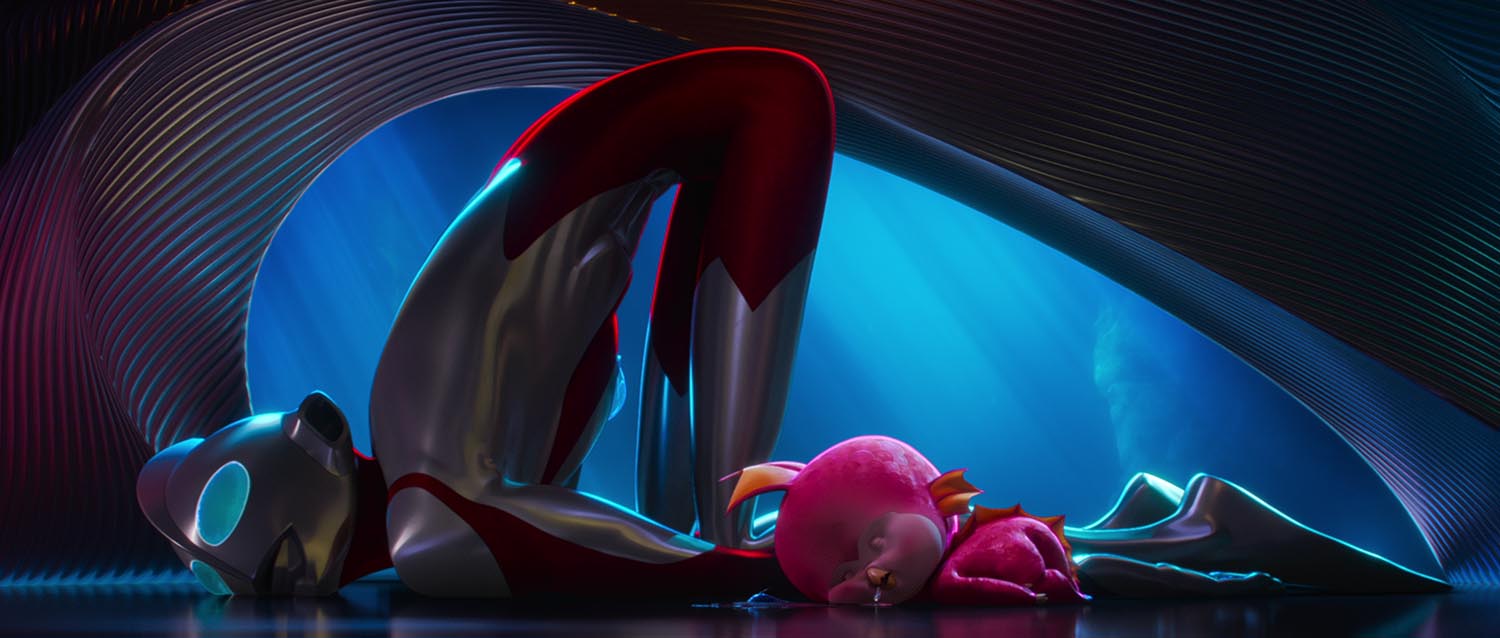
How did you build your soundtrack as you developed animation?
Tindle: I know a lot of times in films, a composer and a sound designer will never meet each other. I don’t like working like that. I wanted to bring them in as early as I could, and our incredible producers, Tom Knott and Lisa Poole, facilitated that. So, Scot Stafford who was our composer, and Randy Thom who was our sound designer were involved very early on. They both live in the Bay Area, and they know each other. So they were watching the film very early on. I never liked cutting to temp music because I knew it could handcuff the composer. As we made our cut, we edited our temp track with our amazing music editor, Sheri Ozeki. And then, when Scot came in to do his music, at that point he and Randy had already apportioned where we were going to lean into sound [effects], or lean into music, and where we going to merge them. It all came together because they were part of it from the beginning.
Was the voice of Emi something that Randy Thom cooked up?
Tindle: Yes, that was another reason we wanted to bring in Randy early. He’s so good at character voices. And we knew that the animators were going to need that. And so, in the same way that we approached animating dialogue, we didn’t want to add [Emi’s voice] after the fact. We’d give Randy an animatic for a sequence so he could start to create a voice for her. And that’s how we launched the animators, the same way we animated the [human] dialogue.
It’s interesting that you mentioned The Iron Giant because this story has a similar blend of spectacle and tenderness. Were you conscious of that, as you built the narrative?
Tindle: A lot of our friends worked on Iron Giant. Brad Bird is a huge inspiration. He’s one of my favorite filmmakers, regardless of the medium of the stories that he tells. But those are also the same kind of stories that Akira Kurosawa tells – big spectacle and emotion. The first moments in Seven Samurai, for instance, when the villagers who are powerless need help, and then [the samurai played by] Takashi Shimura – who informed the design of Professor Sato – comes onto the scene and pretends to be a priest to free the hostage, that’s a very emotional beginning to what becomes this epic story.
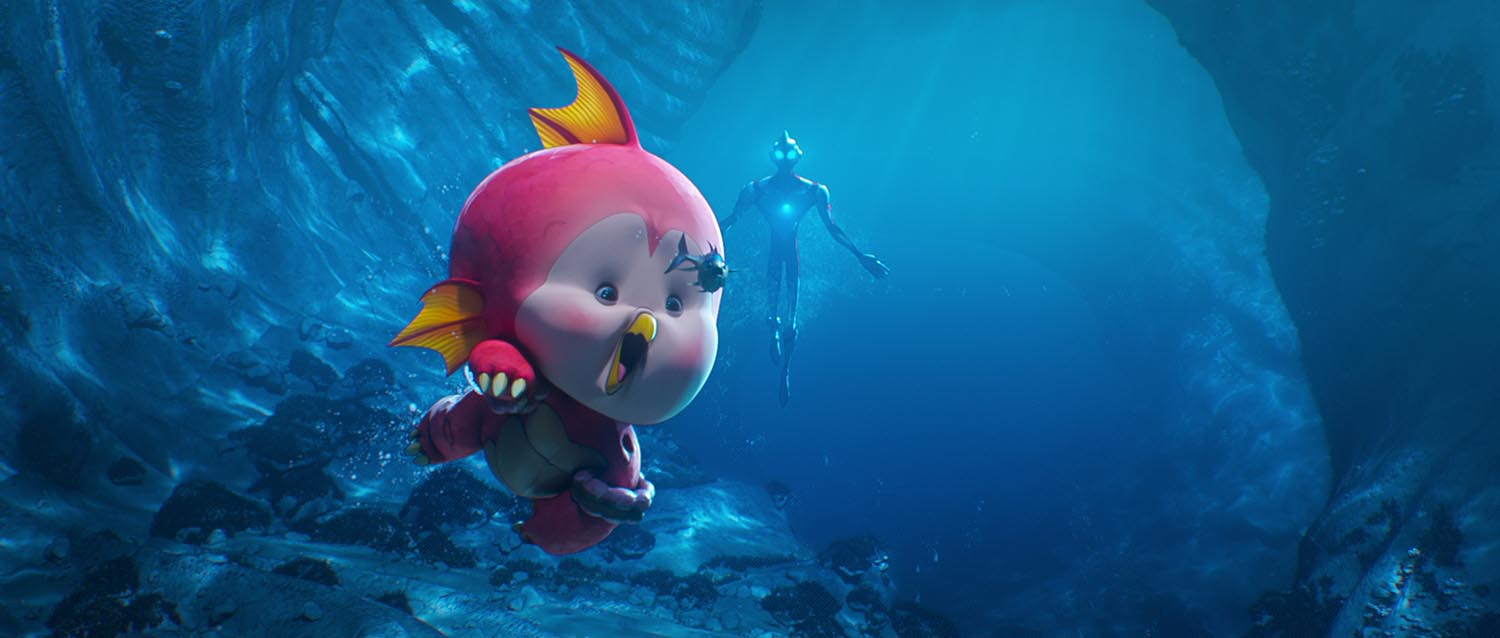
Looking back on this experience, how was it working with ILM, and do you hope to bring them back to Kaiju Island with you?
Tindle: This is my second time working with ILM, after Lost Ollie, and I had an incredible time. Hayden Jones – who won an Emmy on Lost Ollie – worked primarily with ILM’s London team, together with the unfortunately now-defunct Singapore team, and the team in Vancouver. It was a lot of the same people I worked with on Ollie who were on this. And I would beg, borrow, and steal to work with those guys anytime I can. I just sent them a new script and said, ‘Hey, start thinking about this.’
Good luck, and congratulations on a charming film. It’s an interesting take on the character. You don’t lean on so much the idea that Ultraman is an alien, or is he?
Tindle: Well [long pause], I won’t say ‘no’!

.png)